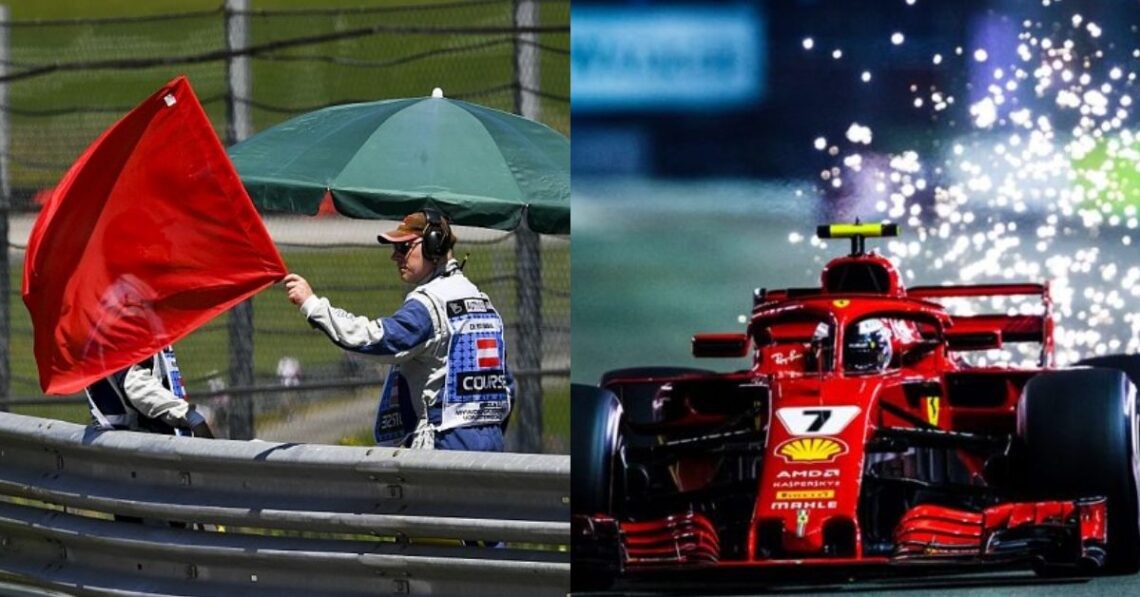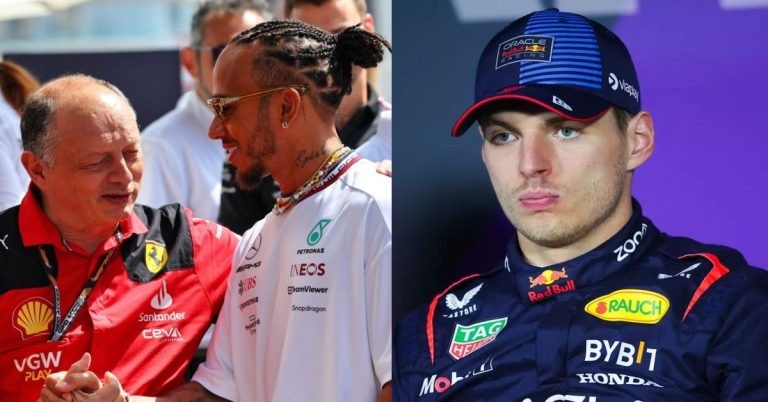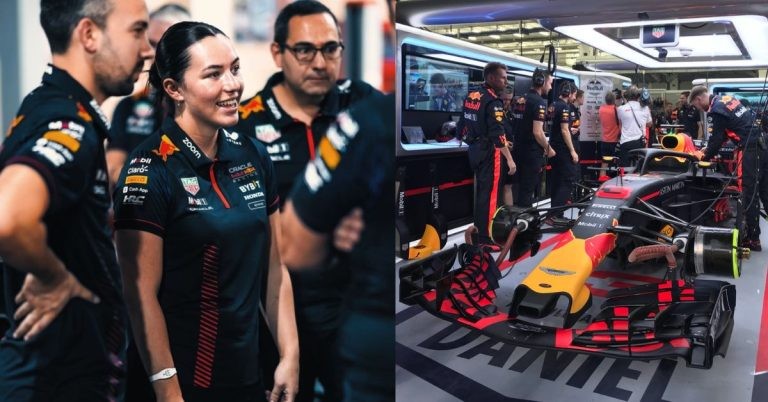Flags play an important role in regulating races in F1 while ensuring the safety of the drivers. The presence of a red flag means the session had stopped and the drivers may resume back to their pits immediately. The flag is used when there is an accident, the presence of debris on the track, or any other safety concerns.
When a red flag is raised, the race is stopped until the drivers’ and the track’s safety can be confirmed. When it is authorized to continue racing, a new starting grid is established for the drivers based on where they were when the red flag appeared.
In the past, F1 has been criticized for not using red flags enough and relying on yellow flags instead. This criticism came after the tragic passing of Jules Bianchi, who had a fatal crash under yellow flags. Since then, F1 has increased the use of red flags to ensure the safety of its drivers.
LAP 9/58
🚩 RED FLAG 🚩
The race has been red-flagged due to the gravel on the track from Albon’s incident #AusGP #F1 pic.twitter.com/5Bqa5ak1t8
— Formula 1 (@F1) April 2, 2023
During a red flag, the drivers have the freedom to step out of their cars and head to their respective garages. They can discuss strategy changes with their crew or analyze race data. The pit crew can change tires or repair damages, typically to the front wing, floor, or barge boards, which are repairable. When the lights at the pit lane exit turn green, the cars will join the track behind the safety car and drive around the circuit.
In the past, F1 used running starts after red flagging, but in recent times, standing starts have been the norm. This standing starts to add more excitement and unpredictability to the race, making for a thrilling spectacle for F1 fans. Ultimately, F1’s use of red flags and safety protocols shows its commitment to safety, ensuring the safety of its drivers while providing an entertaining and competitive racing experience
Another red flag!
The race is stopped due to the amount of debris following Kev’s incident. #HaasF1 #AusGP pic.twitter.com/87uriVCY5b
— MoneyGram Haas F1 Team (@HaasF1Team) April 2, 2023
The role of the flag is important since there is a significant impact on the outcome of a race. Multiple red flags were raised at the Australian Grand Prix in 2023 two of which were issued in the last four laps. Haas driver Kevin Magnussen brought out the first red light when he clipped the barriers and stopped on the circuit. On lap 57, the race was restarted, but another red flag was displayed after crashes between the two Alpine drivers and another incident involving Logan Sargeant and Nyck de Vries.
What is the DRS system?
The Drag Reduction System (DRS), a driver-controlled mechanism that aids overtaking and promotes close racing in Formula 1, has been a controversial topic since its introduction in 2011. The system enables the driver to open a flap in their rear wing, reducing drag levels and increasing top speed when running within a second of a car in front.
Despite being reset with new rules at the beginning of the 2022 season, DRS remains a contentious issue among both F1 fans and competitors. Each track has a different number of DRS zones, and the figure is also influenced by other features as per the venue.
BREAKING: Lewis Hamilton is disqualified from Friday’s qualifying session for a technical infringement related to the DRS system#BrazilGP 🇧🇷 #F1 pic.twitter.com/zjgQ4WlArN
— Formula 1 (@F1) November 13, 2021
While proponents of the system argue that it has made overtaking more feasible, critics argue that it has harmed the sport, making it too easy for drivers to pass and taking away from the skill of wheel-to-wheel racing. The use of DRS can be seen as a shortcut, rather than a genuine battle for position, as it allows the driver to pass with relative ease. Additionally, some drivers have expressed their frustration with the system, as it can often lead to unexciting, processional races.
The absurd image of Max Verstappen and Charles Leclerc slowing down at Jeddah in March 2022 to try to make sure they were behind at the point when they were allowed to employ DRS, giving them a better chance of overtaking, was reported.
After you… 😇
No, after you… 🧐
The battle for DRS between @Charles_Leclerc and @Max33Verstappen 😅#SaudiArabianGP #F1 pic.twitter.com/8PaKNs8COP
— Formula 1 (@F1) March 28, 2022
The fact that the overtaking is done before the braking, according to Leclerc, “gives the car behind too big of a speed delta,” adding that DRS was essential. When track conditions are judged risky due to weather or racing incidents, race directors have the option of suspending DRS.








